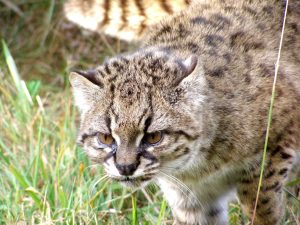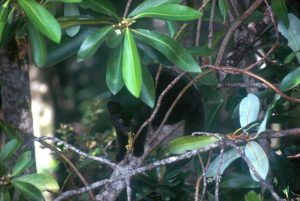
Santiago, Sep 29 (EFE).- A pioneering conservation plan in Chile seeks to protect the kodkod, the smallest wild cat in the Americas, which is under threat because of the loss of habitat, attacks by dogs and cats, illegal hunting and vehicle collisions.
The project, which is being funded by National Geographic, will be carried out by a team of scientists and several institutions, with the goal of stopping the decline in the kodkod’s population.
The conservation plan will be launched in seven Chilean regions: Valparaiso, Metropolitana and O’Higgins, in the central part of the country, and Maule, Biobio, La Araucania and Los Rios, in the south.
The kodkod, also known as the güiña, is a species that only lives in Chile and Argentina and that faces growing threats, as its habitat is being transformed.
The project’s director, Constanza Napolitano, said that the goal is to “mitigate the main threats” that the small cat faces.
“The protection of this cat works like an ‘umbrella’, because many other species will indirectly benefit from the measures contemplated in this plan,” Napolitano, who is a researcher at Chile’s Institute of Ecology and Biodiversity (IEB), said.
Deforestation and the expansion of agriculture have led to a decline in the size of the kodkod’s habitat.
“The fragmentation and destruction of their habitat is not easy to address because of its size and because many actors are involved, such as the real estate industry, which divides and subdivides plots of land, increasing population density in rural areas, including people with cats and dogs,” Napolitano said.

The presence of domestic cats and dogs is precisely a growing threat, as kodkods have been attacked and are susceptible to diseases carried by those domestic animals, including feline immunodeficiency.
Chicken farmers are another threat, as many do not think twice about killing güiñas when they attempt to enter the chicken coops.
The project, which will be carried out in collaboration with Chile’s National Forest Corporation (Conaf), the Ministry of the Environment, and the Institute of Agricultural Development (INDAP), includes several specific measures that will mitigate some of these threats.
One of the measures is to carry out sterilization and health campaigns for domestic animals, as well as to educate people about responsible pet ownership.
Other measures include providing subsidies for chicken farmers to construct predator-proof chicken coops, placing speed bumps and signs where güiñas tend to cross roads, and establishing wildlife corridors.
“We need people to value native carnivores like the güiña. Their presence involves many benefits, because they hunt rodents and indirectly control hantaviruses,” Napolitano said.
